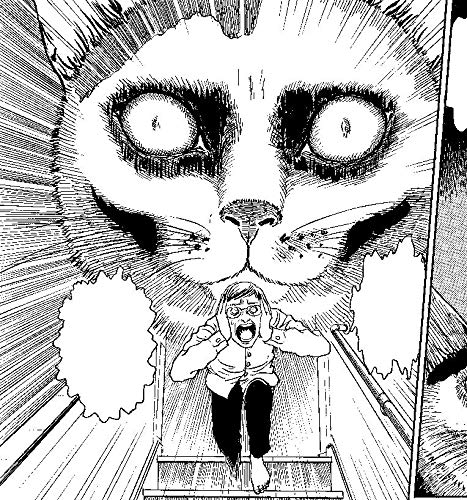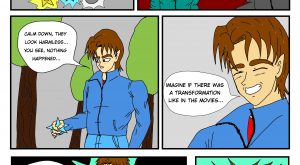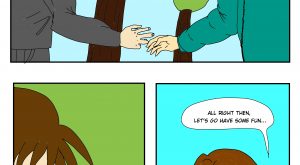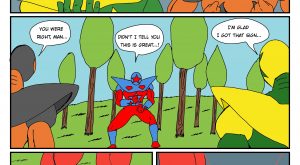Junji Ito’s Cat Diary: Yon & Mu (manga)
Junji Ito’s Cat Diary: Yon & Mu (Japanese: 伊藤潤二の猫日記 よん&むー, Hepburn: Itō Junji no Neko Nikki: Yon & Mū) is an autobiographical seinen manga written and illustrated by Junji Ito. Appearing as a serial in the Japanese manga magazine Monthly Magazine Z from the January 2008 issue to the February 2009 issue, it follows the adventures of J-kun, a horror manga artist as he adjusts to life with cats: Yon, whom his fiancėe brings along to their new house, and Mu, a Norwegian Forest cat whom the couple adopts as a kitten. Junji Ito’s Cat Diary draws on autobiographical elements of Ito’s personal experience with cats. Publisher Kodansha compiled the ten installments of the manga into a bound volume and released it in March 2009.
Kodansha Comics USA published an English-language translation of Junji Ito’s Cat Diary in October 2015, which also included the contributions of Ito and his wife to the 2011 collection Teach Me, Michael! A Textbook in Support of Feline Disaster Victims. Upon publication, the manga received a favorable critical and commercial response, debuting in The New York Times‘s weekly list of the ten best-selling manga volumes. It received generally positive reviews from critics, who enjoyed it as a cat-centered manga whose humor was derived from the emphasis on the behavior of the cat caretaker, rather than the cat. Critical discussions have centered around Ito’s use of realism and exaggerated horror to elicit moments of comedy, the manga’s relationship to previous works by Ito, and how the artwork depicts the relationship between cats and their caregivers.
Style
Ito used two main artistic styles throughout the manga: a realistic one and a horror-tinged one of exaggeration. Joe McCulluch of The Comics Journal wrote that Ito’s transitions between these two styles provided the foundational humor of the manga, in that Ito punctuates scenes of realistically drawn domesticity with exaggerated moments of stylized horror. For example, one scene in which J-kun attempts to play with the cats starts within Ito’s realistic style, only to have J-kun quickly devolve visually into a monster as he becomes more upset that the cats respond to his wife’s attempts at playing with them but not his; his features become exaggerated and horrific, while the cats, however, lose their sense of motion and activity from earlier and become “stiffly realistic” at his failed attempts to play with them. Anime News Network‘s Rebecca Silverman wrote that Ito’s realistic art worked to make the cats endearing, while the moments of horrific art served as comedy.
Austin Price, another writer for The Comics Journal, remarked that Junji Ito’s Cat Diary incorporates the “conceits and styles” of his earlier manga, such as narrative tone and body horror, to act as a parody of them. According to Price, only the everyday narrative of Junji Ito’s Cat Diary delineated it from Ito’s earlier works, which suggested to him that a degree of authorial humor was present in Ito’s works; Price raised the possibility that “Ito’s work was itself a kind of grand joke.”
Other critics focused on the art’s relationship to depictions of pet caretaking. Josiah Stoup of Otaku USA suggested that Ito’s art caricatured “the intense emotions that a pet owner feels,” with both the cats and J-kun alternatively being frightened by the other. Stroup interpreted J-kun’s periodically monstrous form as how his overwhelming affection appeared sometimes to the cats. Silverman wrote that A-ko’s terrifying appearance reflected her love for her cats, in that she appeared “as creepy as many of us cat owners fear we do.” A-ko’s appearance, with her almost entirely white eyes, has also been noted to share similarities with yokai, supernatural Japanese entities.
Reception
Junji Ito’s Cat Diary: Yon & Mu was favorably received by English-language readers, charting in the fourth spot on The New York Times‘s weekly list of the ten best-selling manga volumes upon publication. In general, the manga was also positively received by critics. Reviewers enjoyed the narrative as a lighthearted window into pet caretaking, where the humor derived from the caretaker’s response to the cats, rather than the cats’ behavior. Children’s librarian Marissa Lieberman wrote that, because of the overlap in the importance of narrative pacing and timing in both comedy and horror, Ito’s previous work in horror and gag manga helped to make Junji Ito’s Cat Diary unique among other cat-centered manga. Ito’s two styles of artwork were generally seen as complementing the narrative nicely, with highlights being the characters of Mu and Yon, the range of character facial expressions, and the timing and content of the gags. The perceived potential audience for the manga was a point of discussion within the reviews, with several critics writing that the manga would appeal mainly to cat caretakers and fans of the author. Faustine Lillaz of Planete BD, in contrast, wrote that the humor of the manga would have a wide appeal.
| Junji Ito’s Cat Diary: Yon & Mu | |

Original Japanese cover, as published by Kodansha (2009)
|
|
| 伊藤潤二の猫日記 よん&むー (Itō Junji no Neko Nikki: Yon & Mū) |
|
|---|---|
| Genre | Autobiographical |
| Manga | |
| Written by | Junji Ito |
| Published by | Kodansha |
| English publisher | Kodansha Comics USA |
| Magazine | Monthly Magazine Z |
| Demographic | Seinen |
| Original run | January 2008 – February 2009 |
| Volumes | 1 |





